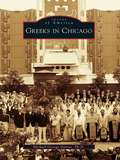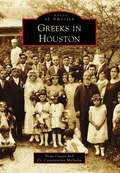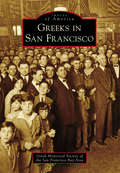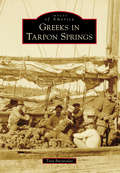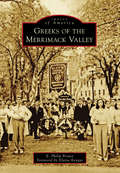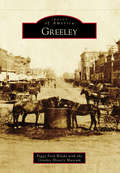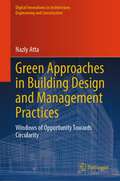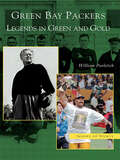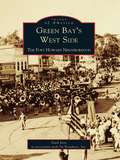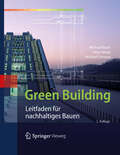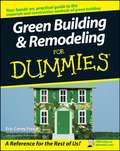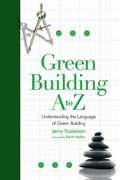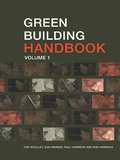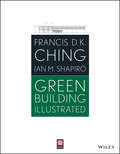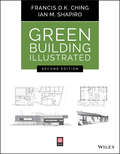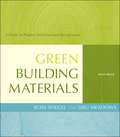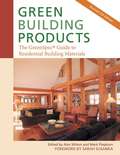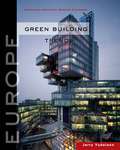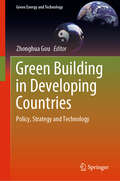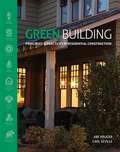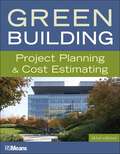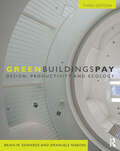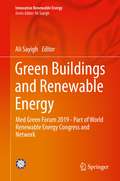- Table View
- List View
Greeks in Chicago
by Ph.D., Michael DavrosGreeks arrived in America with the expectation that freedom would permit their families to thrive and be successful. With hard work, belief in the Orthodox faith, and commitment to education, Greeks ascended in Chicago, and America, to positions of responsibility and success. Today Greek Americans are among the wealthiest and most successful of immigrant groups. Greeks recognized a historical imperative that they meet the challenges and aspirations of a classical Hellenic heritage. Greeks in Chicago celebrates the rich history of the Greek community through copious pictorial documentation.
Greeks in Houston
by Irene Cassis Constantina MichalosThis history of the Greeks in Houston is really the story of individuals who worked diligently to forge new lives for themselves even as they maintained their Greek identity and their Orthodox faith. The efforts of many of the founders are immortalized in the buildings that constitute the Annunciation Greek Orthodox Cathedral complex. Their names remind us of their hard work and commitment to establishing their koinonia (communion) in Houston. There are many other names that have gone unremarked over the decades but to whom we owe just as much for their tenacity and dedication. And there are the new generations who inherited this legacy and keep it vibrant through the stewardship of their faith and culture.
Greeks in San Francisco (Images of America)
by Greek Historical Society of the San Francisco BayThe history of San Francisco's Greek community is linked to the history of San Francisco. The first Greeks to arrive were sailors, miners, and laborers. By the 1880s, they had formed benevolent, civic, and fraternal organizations. In 1904, the first Greek Orthodox Church west of Chicago was established, and Third Street became the heart of the Greek community. The 1906 earthquake and fire destroyed much of their new community, but undaunted, the Greeks of San Francisco rebuilt their lives to become business leaders and politicians, contributing their entrepreneurial and philanthropic spirit to the city's rich heritage.
Greeks in Tarpon Springs (Images of America)
by Tina BucuvalasBeginning in 1905, large numbers of Greeks from the Dodecanese and Saronic Gulf islands settled in Tarpon Springs to work in the sponge business. They significantly expanded the industry and changed Tarpon Springs forever. Greektown flourished with residences, stores, churches, restaurants, and recreational facilities stretching from the sponge docks to downtown. Sponge fishing and related activities served as the economic base for the community. By 1913, as many as half of Tarpon Springs residents were reputedly Greek, and many businesses displayed both Greek and American flags. Today, Tarpon Springs' Greek community preserves a strong ethnic and maritime heritage. While some major US cities have a larger Greek population, no other has a greater percentage with Greek heritage than Tarpon Springs.
Greeks of Stark County
by Regine Johnson Samonides William H. SamonidesBy the early 20th century, Stark County was one of the fastest-growing regions in the nation. The home of martyred president William McKinley had become a major industrial center, with alloy steel as the engine of growth for the booming local economy. To fill the ever-increasing demand for labor, waves of immigrants from Greece and Asia Minor settled in Canton and Massillon. Some sought economic opportunity; others were fleeing the Pontian Black Sea coast, where ethnic cleansing of Greeks accompanied the creation of the Turkish state. For the immigrant earning less than $3 a day, building a church meant making a commitment to a new life. In Canton, St. Haralambos Greek Orthodox Church was founded in 1913 and Holy Trinity Greek Orthodox Church in 1917. In Massillon, St. George Greek Orthodox Church was established in 1931. Churches and mutual aid organizations provided cohesiveness to the dynamic, often fractious, Greek community, which survived world wars, economic depression, and social discrimination and continues to flourish today.
Greeks of the Merrimack Valley (Images of America)
by E. Philip Brown Elaine KevgasThe Merrimack Valley became home to Greeks after the great immigration to the United States in the 19th and 20th centuries. After its independence from the Ottoman Empire in 1832, Greece had inadequate resources for its citizens, which led to much hardship. Many of these refugees came to the Merrimack Valley in search of a better living. They settled in Haverhill, Lawrence, and Lowell, Massachusetts, or Concord, Manchester, and Nashua, New Hampshire, where they secured jobs in factories and mills. Those who were unable to gain employment in the manufacturing industries went into the service sector; others became self-sufficient, building restaurants, shoe shops, and grocery stores. Although they suffered discrimination because of their distinct language and culture, they were not deterred; instead, they remained focused, went about their activities in peace, and contributed immensely to the socioeconomic development of their newfound home.
Greeley (Images of America)
by Greeley History Museum Peggy Ford WaldoIn October 1869, Nathan Meeker, the New York Tribune's agricultural editor, visited the Colorado Territory. Impressed with the scenery, people, climate, and resources, he wrote an article, "A Western Colony," for the Tribune, inviting principled people with money to invest in a temperance and agricultural colony. Over 3,000 prospective colonists wrote to Meeker. On December 23, Meeker founded the Union Colony, a joint-stock colonization company, and chose 737 of the best applicants as members. In April 1870, the company established the town of Greeley, named for Tribune editor Horace Greeley. Founded on the principles of temperance, religion, education, agriculture, irrigation, cooperation, and family values, Greeley became the Weld County seat in 1877. Agriculture and water development ensured Greeley's reputation as the "Garden Spot of the State." Potatoes became its first commercially viable crop. From 1900 to 1950, agricultural expansion ushered in a succession of immigrants, including Germans from Russia, Japanese, Hispanics, and Mexican nationals, looking for work and new opportunities. Greeley's economy, growth, and diversity remain rooted in the land and its people.
Green Approaches in Building Design and Management Practices: Windows of Opportunity Towards Circularity (Digital Innovations in Architecture, Engineering and Construction)
by Nazly AttaThis book examines green transition and circular economy in the fields of building design and Real Estate management. By outlining windows for seizing the opportunity to integrate circular approaches in current building practices, the book provides information tools to support building stakeholders (e.g. building designer and managers, manufacturers, Real Estate owners, maintenance operators, facility managers, etc.) in: (i) understanding circular re-strategies (e.g. reuse, remanufacturing, repurposing, etc.), the related requirements and the pre-conditions for their implementation within building design and management practices; (ii) reviewing design approaches at the product and building scale, also highlighting new circularity-related contents for the Briefing Documents; (iii) developing circular organizational and contract models for the procurement of Facility Management services, also integrating new circularity-related contents in Invitations to Tenders (ITTs); and (iv) assessing the quality and the effectiveness of circular practices, also highlighting circularity performance metrics and indicators in the context of corporate sustainability reporting.
Green Bay Packers: Legends in Green and Gold (Images of Sports)
by William PovletichTheir football legacy is second to none--12 NFL Championships, 25 Pro Football Hall of Fame members, and names like Lombardi, Lambeau, and Favre, synonymous with a winning tradition. In a time when big money and television markets dictate escalating player salaries and franchise relocations, the Green Bay Packers continue to succeed as a professional sports anomaly. While surviving certain bankruptcy, enduring numerous seasons of mediocrity, and playing in the smallest market of any major sports team in America, the Green Bay Packers have risen to the top to be recognized as one of the greatest franchises in sports history. Green Bay Packers: Legends in Green and Gold chronicles the team's phenomenal successes, heartbreaking letdowns, and legendary moments, beginning with an inauspicious inception in 1919 through the Super Bowl XXXI victory over the New England Patriots in 1997.
Green Bay's West Side: The Fort Howard Neighborhood
by Gail Ives Inc. On BroadwayA prominent borough for many years, Fort Howard occupied the area immediately west of the mouth of the Fox River in Green Bay, Wisconsin. Named after the military garrison that once stood there, Fort Howard-once Green Bay's fierce rival-was incorporated into the City of Green Bay in 1895. Today, the neighborhood is a seamless extension of the city, blending burgeoning commerce with historic homes. This collection of vintage photographs highlights stories of the people and businesses that have made this area unique, from philanthropic businessmen to the bustling Broadway District.
Green Building
by Michael Bauer Michael Schwarz Peter MösleDer bew#65533;hrte Leitfaden f#65533;r das Planen, Bauen und Betreiben von nachhaltigen Geb#65533;uden jetzt in der zweiten Auflage Energieeffizientes und nachhaltiges Bauen ist heute zur Pflichtaufgabe f#65533;r Bauherren, Architekten und Planer geworden. Ganzheitliches Wissen zu effizientem W#65533;rmeschutz, innovativen Fassaden, bedarfsgerechten Raumklimasystemen, nachhaltigen Materialien und energie- und ressourcensparenden Energieerzeugungssytemen und Konstruktionen wird erwartet, obwohl am Markt immer noch eher sequentiell und nicht integral gedacht und geplant wird. Dieses Buch soll helfen, die relevanten Einfl#65533;sse zu kl#65533;ren und den Blickwinkel f#65533;r #65533;kologische Geb#65533;ude insgesamt zu erweitern. Als Handbuch und Nachschlagewerk liefert es Bauherren, Architekten, Planern, Geb#65533;udebetreibern und Portfolio-Haltern Informationen, wie bei Planung, Bau und Betrieb energieeffizient, wirtschaftlich und strategisch vorgegangen werden kann. Die Dokumentation prominenter Bauten wie die des SPIEGEL-Verlagshauses in Hamburg, des Roche-B#65533;rohochhauses in Basel oder der Deutschen Bank-T#65533;rme in Frankfurt liefert architektonisch ansprechende Beispiele und detaillierte L#65533;sungswege. Interviews mit den Architekten und Bauherren vervollst#65533;ndigen das Buch und machen es zu einem umfassenden Standardwerk #65533;ber nachhaltige Architektur.
Green Building & Remodeling For Dummies
by Eric Corey FreedWant to build responsibly, reduce waste, and help preserve the environment? Green Building & Remodeling For Dummies is your friendly, step-by-step guide to every facet of this Earth-friendly method of construction. Building a home--even a green home--uses plenty of resources and energy. This practical, hands-on book shows you how to build or remodel conscientiously, whether your dream home is a simple remodel or a brand-new multimillion-dollar mansion.You'll start by identifying green materials and sizing up potential systems and construction sites. You'll weigh the pros and cons of popular green building methods and identify opportunities for saving money in the long run. Need to find some green professionals to assist you in your venture? We'll help you do that, too. This book will also help you discover how to:Understand the lifecycle of building materialsChoose the right system for your green building projectPut together a green teamWork within your budgetUse green building methods and sustainable systemsSpeed construction and reduce energy use and wasteRefinish old fixtures and materialsBeware of asbestos and lead-paint hazardsAvoid costly mistakesComplete with lists of ten green things to do on every project and ten things you can do right now in your home in order to go green, Green Building & Remodeling For Dummies is your one-stop guide to planning and building the home you've always wanted.
Green Building A to Z
by Jerry YudelsonGreen building is the fastest-growing trend to hit since the Internet, bringing with it an enormous range of new products, systems, and technologies. Green Building A to Z is an informative, technically accurate, and highly visual guide to green building, for both decision-makers and interested citizens. It begins with an introduction to the importance of green buildings and a brief history of the green building movement, outlines the benefits and costs of green buildings, and shows how you can influence the spread of green buildings. The book touches on key issues, such as enhancing water conservation, reducing energy use, and creating a conservation economy. The book examines all aspects of green buildings, including: Architecture 2030 Locally sourced materials Natural ventilation Solar energy Zero-net-energy buildings More than just a reference, this book emphasizes the importance of green buildings and green developments for a sustainable future. It will be an invaluable resource for businesspeople, homeowners, product manufacturers, developers, building industry professionals, and government officials.
Green Building Costs: The Affordability of Sustainable Design
by Ming HuSustainability has become a driver of innovation in the built environment, but the affordability of sustainable building remains a significant challenge. This book takes a critical view of the real cost of green building. It provides readers with a non-biased evaluation based on empirical construction cost data and sheds light on the affordability of sustainable buildings. Chapters are presented in three parts. The first part lays the foundation to demystify the perception of green buildings being expensive to construct by providing empirical evidence that green buildings, even net-zero buildings, are not necessarily more expensive to build than conventional buildings. The second part presents empirical evidence, common misperceptions of a higher green building construction cost are debunked. The author offers a new framework to explain the construction cost drivers and differences of sustainable buildings: the project characteristics and project team characteristics (human factors). The third part directs the readers’ attention to the important role that human factors play in controlling and reducing construction costs, with a focus on the project design team. A lack of skills, expertise, and experience during the design phase is likely to be the biggest contributor to higher construction costs. Empirical analysis, case studies on LEED-certified buildings, and interviews with project teams are used to present a pathway to more affordable green building at the end. This will be a crucial resource for students and professionals in architecture, engineering, construction management, and planning and energy policy.
Green Building Handbook: A Guide to Building Products and their Impact on the Environment
by Paul Harrison Tom Woolley Rob Harrison Sam KimminsEnvironmentally responsible building involves resolving many conflicting issues and requirements. Each stage in the design process from the fundamental decisions about what, where and even whether to build has implications for the environment. Evolving out of the success of Green Building Digest, a publication described by Building Design as well-researched, authoritative and exhaustive, this practical new handbook considers the environmental issues which relate to the production, use and disposal of key building products and materials. It is designed to help specifiers and purchasers gain awareness of the potential environmental impact of their decisions. Chapter by chapter Green Building Handbook looks at a different sector of the trade from flooring to roofing, comparing the environmental effects of commonly available products with less well known green alternatives. A Best Buy section then ranks these products from lowest to highest impact.
Green Building Illustrated
by Francis D. Ching Ian M. Shapiro"Green Building Illustrated is a must-read for students and professionals in the building industry. The combination of incredibly expressive illustrations and accessible technical writing make concepts of green building on paper as intuitive as they would be if you toured a space with experts in sustainable building." --Rick Fedrizzi, President, CEO, and Founding Chair of the U.S. Green Building Council "The authors of Green Building Illustrated deliver clear and intelligent text, augmented by straightforward but compelling illustrations describing green building basics. This comprehensive book covers everything from the definition of green building, to details of high performance design, to sensible applications of renewable energy. This is a book with appeal for all architects and designers, because it addresses general principles such as holistic and integrated design, along with practical realities like affordability and energy codes. Green Building Illustrated describes a pathway for reaching Architecture 2030's carbon emission reduction targets for the built environment."--Ed Mazria, founder of Architecture 2030Francis D.K. Ching brings his signature graphic style to the topic of sustainable designIn the tradition of the classic Building Construction Illustrated, Francis D.K. Ching and Ian M. Shapiro offer a graphical presentation to the theory, practices, and complexities of sustainable design using an approach that proceeds methodically. From the outside to the inside of a building, they cover all aspects of sustainability, providing a framework and detailed strategies to design buildings that are substantively green. The book begins with an explanation of why we need to build green, the theories behind it and current rating systems before moving on to a comprehensive discussion of vital topics. These topics include site selection, passive design using building shape, water conservation, ventilation and air quality, heating and cooling, minimum-impact materials, and much more.Explains the fundamental issues of sustainable design and construction in a beautifully illustrated formatIllustrated by legendary author, architect, and draftsman Francis D.K. Ching, with text by recognized engineer and researcher Ian M. ShapiroIdeal for architects, engineers, and builders, as well as students in these fieldsSure to be the standard reference on the subject for students, professionals, and anyone interested in sustainable design and construction of buildings, Green Building Illustrated is an informative, practical, and graphically beautiful resource.
Green Building Illustrated
by Francis D. Ching Ian M. ShapiroFULLY ILLUSTRATED, UPDATED GUIDE TO THE STRATEGIC DESIGN OF GREEN BUILDINGSIn the tradition of Building Construction Illustrated, Francis D.K. Ching and Ian M. Shapiro offer a fully illustrated guide to the theory and practice of sustainable design. This guide provides architects, designers, and builders in the green design professional community a framework and detailed strategies for designing substantively green buildings. With a focus on sustainable sites, approaching and reaching net-zero energy, low and zero-water usage, minimum-impact materials and superior indoor environmental quality, this guide explains why we need to build green, as well as green building theory and advancements in the industry. This Second Edition includes: All-new case studies featuring geographically diverse buildings with proven zero energy performance Expanded coverage of zero energy building design, as well as zero water and zero waste buildings Practical guidance for the schematic design of high-performance buildings, heating and hot water system selection, building envelope details, and integrating renewable energy Advanced strategies, such as the concept of shape efficiency, and the optimal location for stairwells in buildings Additional strategies for affordability in green design and construction Updated references to the latest codes and standards This Second Edition of Green Building Illustrated is an excellent resource for professionals, students and those interested in the design and construction of sustainable buildings.
Green Building Materials
by Ross Spiegel Dru MeadowsThe ultimate user's manual to green building materials To properly select and specify green building materials, successful architects need authoritative, real-world advice on how to select and use nontoxic, recycled, and recyclable products, and how to integrate these products into the design process in order to capitalize on the many practical and economic advantages of "going green. " Green Building Materials, Third Edition is the most reliable, up-to-date resource to meet today's green building challenges-from reducing waste and improving energy efficiency to promoting proper code compliance and safeguarding against liability claims. Written by two nationally known experts on green building methods and materials, Green Building Materials, Third Edition offers in-depth, practical information on the product selection, product specification, and construction process. This new Third Edition is an excellent hands-on guide to today's newest range of green building materials: what they are, where to find them, how to use them effectively, and how to address LEED requirements. Organized by CSI MasterFormat® category for fast access to specific information, it features: A new chapter on eco-labels, green standards, and product certification A new appendix providing reference information for sustainability standards and standards development organizations New sample specifications, including green power requirements, vegetated green roof systems, rainwater harvesting, and water reuse systems Revised and updated review of trends affecting the future of green building materials Updated approach and reference information for the product selection process Green Building Materials, Third Edition is an essential tool for designing environmentally friendly buildings-ones made from materials that preserve the Earth's natural legacy for future generations.
Green Building Products
by Alex Wilson Mark PiepkornInterest in sustainable, green building practices is greater than ever. Whether concerned about allergies, energy costs, old-growth forests, or durability and long-term value, homeowners and builders are looking for ways to ensure that their homes are healthy, safe, beautiful, and efficient.In these pages are descriptions and manufacturer contact information for more than 1,400 environmentally preferable products and materials. All phases of residential construction, from sitework to flooring to renewable energy, are covered. Products are grouped by function, and each chapter begins with a discussion of key environmental considerations and what to look for in a green product. Over 40 percent revised, this updated edition includes over 120 new products. Categories of products include: Sitework and landscaping Outdoor structures Decking Foundations, footers, and slabs Structural systems and components Sheathing Exterior finish and trim Roofing Doors and windows Insulation Flooring and floor coverings Interior finish and trim Caulks and adhesives Paints and coatings Mechanical systems/HVAC Plumbing, electrical, and lighting Appliances Furniture and furnishings Renewable energy Distributors and retailers An index of products and manufacturers makes for easy navigation. There is no more comprehensive resource for both the engaged homeowner and those who design and build homes.Editor Alex Wilson is president of BuildingGreen, an authoritative source for information on environmentally responsible design and construction, which also publishes Environmental Building News.Co-editor Mark Piepkorn has extensive experience with natural and traditional building methods.
Green Building Trends: Europe
by Jerry YudelsonThe "green building revolution" is a worldwide movement for energy-efficient, environmentally aware architecture and design. Europe has been in the forefront of green building technology, and Green Building Trends: Europe provides an indispensable overview of these cutting edge ideas and applications. In order to write this book, well-known U.S. green building expert Jerry Yudelson interviewed a number of Europe's leading architects and engineers and visited many exemplary projects. With the help of copious photographs and illustrations, Yudelson describes some of the leading contemporary green buildings in Europe, including the new Lufthansa headquarters in Frankfurt, the Norddeutsche Landesbank in Hannover, a new school at University College London, the Beaufort Court Zero-Emissions building, the Merck Serono headquarters in Geneva, and a zero-net-energy, all-glass house in Stuttgart. In clear, jargon-free prose, Yudelson provides profiles of progress in the journey towards sustainability, describes the current regulatory and business climates, and predicts what the near future may bring. He also provides a primer on new technologies, systems, and regulatory approaches in Western Europe that can be adopted in North America, including building-integrated solar technologies, radiant heating and cooling systems, dynamic façades that provide natural ventilation, innovative methods for combining climate control and water features in larger buildings, zero-netenergy homes built like Thermos bottles, and strict government timetables for achieving zero-carbon buildings. Green Building Trends: Europe is an essential resource for anyone interested in the latest developments in this rapidly growing field.
Green Building in Developing Countries: Policy, Strategy and Technology (Green Energy and Technology)
by Zhonghua GouThe book reveals how green buildings are currently being adapted and applied in developing countries. It includes the major developing countries such as China, Indonesia, Malaysia, Thailand, Pakistan, Cambodia, Ghana, Nigeria and countries from the Middle East and gathers the insights of respected green building researchers from these areas to map out the developing world’s green building revolution. The book highlights these countries’ contribution to tackling climate change, emphasising the green building benefits and the research behind them.The contributing authors explore how the green building revolution has spread to developing countries and how national governments have initiated their own green building policies and agendas. They also explore how the market has echoed the green building policy, and how a business case for green buildings has been established. In turn, they show how an international set of green building standards, in the form of various techniques and tools, has been incorporated into local building and construction practices. In closing, they demonstrate how the developing world is emerging as a key player for addressing the energy and environmental problems currently facing the world.The book helps developers, designers and policy-makers in governments and green building stakeholders to make better decisions on the basis of global and local conditions. It is also of interest to engineers, designers, facility managers and researchers, as it provides a holistic picture of how the industry is responding to the worldwide call for greener and more sustainable buildings.
Green Building: Principles and Practices in Residential Construction
by Abe Kruger Carl SevilleGREEN BUILDING: PRINCIPLES AND PRACTICES IN RESIDENTIAL CONSTRUCTION provides a current, comprehensive guide to this exciting, emerging field. From core concepts to innovative applications of cutting-edge technology and the latest industry trends, this text offers an in-depth introduction to the construction of "green" homes. Unlike many texts that adopt a product-oriented approach, this book emphasizes the crucial planning, processes, and execution methods necessary for effective, environmentally sound construction. This text demonstrates that Earth-friendly products and energy-efficient materials take planning in order to make a building truly green. This visionary text helps students and professionals develop the knowledge and skills to "think green" from start to finish, empowering and inspiring them to build truly sustainable homes.
Green Building: Project Planning and Cost Estimating (RSMeans #73)
by RSMeansA unique cost reference, updated and expanded, for architects, engineers, contractors, building owners, and managers Green building is no longer a trend. Since the publication of the widely read first edition of this book, green building has become a major advancement in design and construction. Building codes and standards have adopted much stricter energy efficiencies. Businesses, institutions, and communities have discovered huge savings, along with health and marketing advantages, in sustainable building. Private facilities, as well as public buildings for Federal, state, and local governments are increasingly required to design and build sustainably in both new construction and renovation. This Third Edition has been updated with the latest in green building tech-nologies, design concepts, standards, and costs. The chapters, case studies, and resources give you practical guidance on green building, including the latest on: Green building approaches, materials, rating systems, standards, and guidelines Energy efficiencies, implementing energy modeling tools Designing and specifying, as well as commissioning, green building projects Often-specified products and materials, as well as a sample spec Goals and techniques for health, comfort, and productivity Evaluating the cost versus value of green products over their life cycle Low-cost green strategies, and special economic incentives and funding Building deconstruction and cost considerations With a new chapter on greening of commercial real estate, this reference is a one-stop resource for the latest in green building approaches and implementation. The contributors, all prominent leaders in green building, include: Mark Kalin, FAIA, FCSI, author of the original GreenSpec Andy Walker, Ph.D., PE, senior engineer with NREL Joseph Macaluso, AACE, certified cost consultant
Green Buildings Pay: Design, Productivity and Ecology
by Brian W. Edwards Emanuele NaboniThis third edition of Green Buildings Pay presents new evidence and new arguments concerning the institutional and business case that can be made for green design. The green argument has moved a long way forward since the previous edition, and this fully updated book addresses the key issues faced by architect, engineer and client today. Green Buildings Pay: Design, Productivity and Ecology examines, through a range of detailed case studies, how different approaches to green design can produce more sustainable patterns of development. These cases are examined from three main perspectives: that of the architect, the client and the user. Completely revised with all new chapters, cases, sections and introductory material the third edition presents: over 20 new researched case studies drawn from the UK, Europe and the USA, written in collaboration with the architects, engineers, clients and user groups examples of office and educational buildings of high sustainable and high architectural quality an exploration of the architectural innovations that have been driven by environmental thinking, such as the new approaches to the design of building facades, roofs, and atria cases which demonstrate current practice in the area of energy/eco-retrofits of existing buildings documentation of the benefit impact assessment schemes such as LEED and BREEAM have had upon client expectations and on design approaches over the past decade beautiful full color illustrations throughout. In the fast evolving arena of green building, the book shows how architects are reshaping their practices to deal with ever more demanding energy standards and better informed users and corporate clients.
Green Buildings and Renewable Energy: Med Green Forum 2019 - Part of World Renewable Energy Congress and Network (Innovative Renewable Energy)
by Ali SayighThis book highlights selected papers presented during the bi-annual World Renewable Energy Network’s 2019 Med Green Forum. This international forum highlights the importance of growing renewable energy applications in two main sectors: Electricity Generation and Sustainable Building. The papers highlight the most current research and technological breakthroughs illustrating the viability of using renewable energy to satisfy energy needs. Coverage includes a broad range of renewable energy technologies and applications in all sectors – electricity production, heating and cooling, agricultural applications, water desalination, industrial applications, and transport. Presents leading-edge research in green building, sustainable architecture, and renewable energy;Covers a broad range of renewable energy technologies and applications in all sectors;Contains case studies and examples to enhance practical application of the technologies presented.
